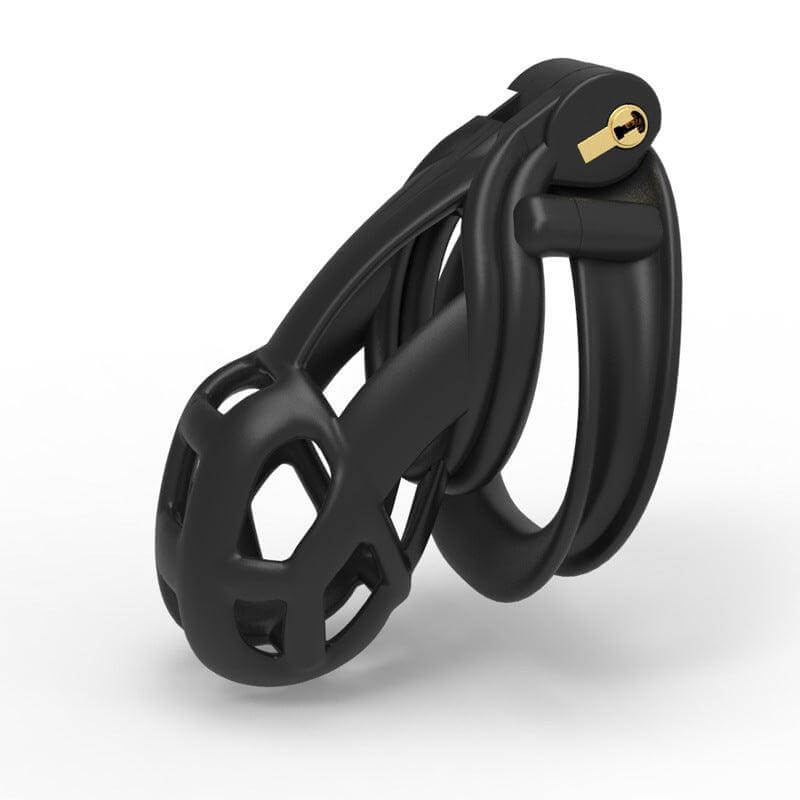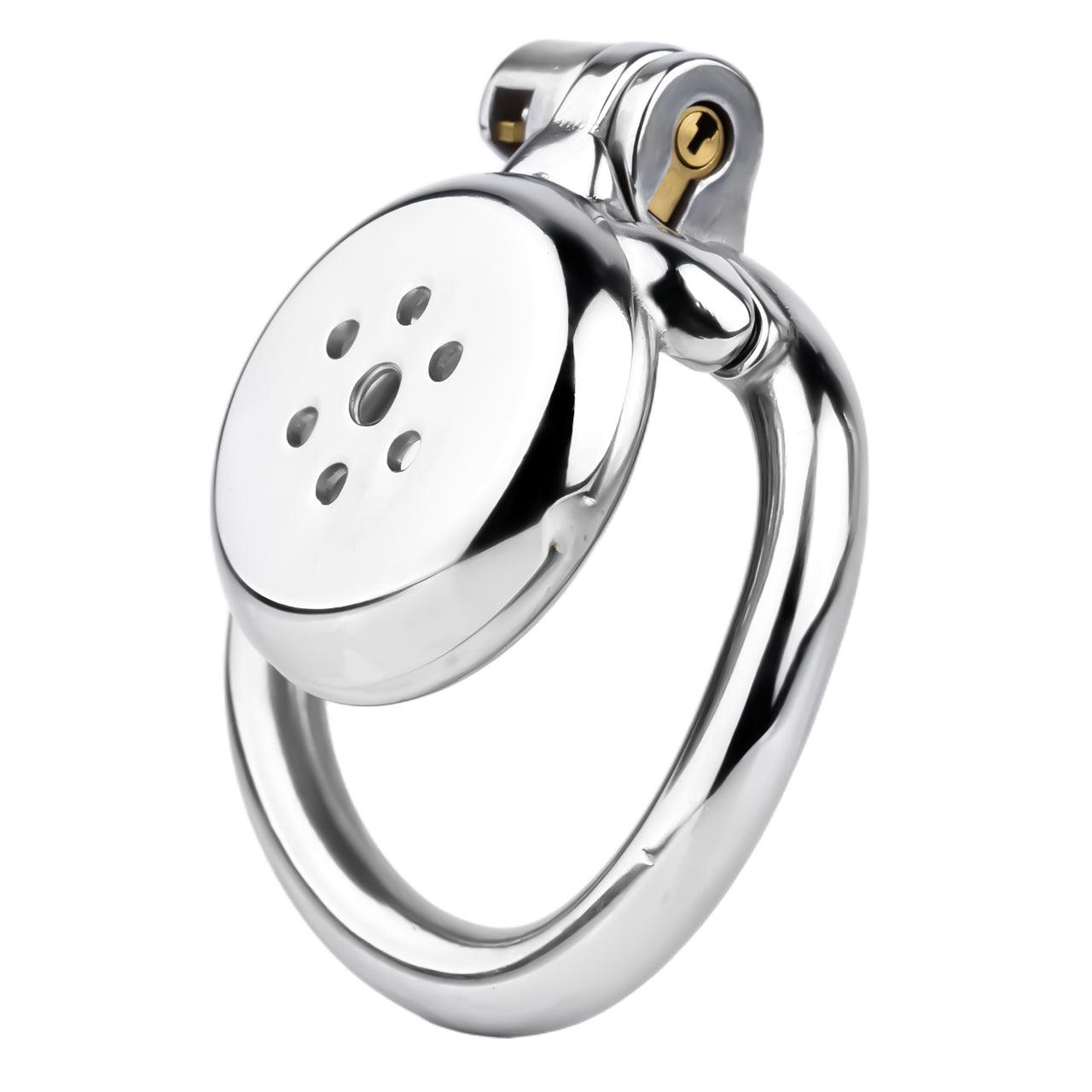Male chastity devices, particularly those that incorporate a catheter or penis probe, are popular in certain BDSM and kink communities. These devices add an extra layer of control and submission dynamics, but they also raise important questions about safety, health, and practical considerations.
In this post, we’ll explore the potential benefits of chastity devices with catheters, as well as the risks, and answer important questions such as whether it’s safe to pee with them in and how long they can be worn.

1. What Are Male Chastity Devices with a Catheter or Penis Probe?
A chastity device is typically used to prevent sexual activity, either to enforce celibacy, control arousal, or as part of a BDSM or power exchange dynamic. Some chastity devices incorporate a catheter (a medical tube inserted into the urethra to drain urine from the bladder) or a penis probe (used for monitoring or controlling arousal). These devices serve as an additional method of control in kink scenarios, often tied to feelings of vulnerability and humiliation.
While these devices have a specific place in certain fetishes or relationships, they also raise questions about how safe they are, whether they’re comfortable to wear, and if they can cause health problems.

2. What Are the Benefits of Using a Chastity Cage with a Catheter?
While there are clear risks associated with chastity devices with catheters, many users find that these devices offer certain benefits, particularly within a BDSM context. Some of these benefits include:
A Deeper Sense of Control and Submission
For those practicing BDSM or power dynamics, a chastity device that includes a catheter can amplify the feelings of submission. The person wearing the device may experience a heightened sense of vulnerability, as the catheter not only limits their sexual pleasure but also makes them dependent on the person in control for both sexual and bodily functions (such as urination).
For those who enjoy humiliation play, the combination of chastity and catheter can intensify the emotional and psychological aspects of their kink, with the catheter acting as a symbol of domination and control.
Prevents Spontaneous Urination and Involuntary Erection
A chastity cage with a catheter prevents spontaneous urination, as the catheter handles the bladder’s needs, effectively bypassing the urethra. This can be particularly useful for individuals who struggle with controlling their arousal during chastity, as the device restricts access to the genitals while maintaining bodily function through the catheter.
Some individuals might also use the device to prevent involuntary erections, as the physical restriction provided by the chastity cage, along with the catheter’s presence, can cause an additional layer of discomfort or deterrence against arousal.
Increased Sensitivity and Awareness
The physical sensation of wearing a chastity cage with a catheter can increase awareness of one's own body, particularly in terms of how the genitals and urinary system function. The presence of the catheter adds a sensation of fullness or pressure in the bladder, which can heighten the experience of wearing the device and reinforce the feeling of being controlled.
For those interested in "denial" or “tease and denial” play, the added layer of discomfort and control offered by the catheter can intensify the emotional and physical experience of chastity.
Enhanced Psychological Play and Humiliation
In many BDSM contexts, humiliation is a core part of the experience. The use of a catheter can play into these dynamics by making the wearer more vulnerable and dependent on the dominant partner. The inability to urinate normally or handle personal hygiene without assistance can evoke feelings of helplessness, embarrassment, and submission, which may enhance the psychological intensity of the scene.
Some may find this form of vulnerability enjoyable and fulfilling, especially in long-term chastity scenarios where the physical presence of the catheter serves as a constant reminder of their status.
Medical Play and Sensation Play
In some instances, the use of a catheter in a chastity device is part of a broader fetish for medical play. For individuals who enjoy sensation play or medical fetishes, the insertion of a catheter combined with a chastity device can offer a unique form of sensory deprivation, discomfort, and control. This form of play can tap into both the physical and psychological elements of kink, blurring the lines between pleasure, pain, and control.

3. Are These Devices Safe?
While chastity devices with catheters can offer several benefits, they do come with certain risks that must be carefully managed. Some potential concerns include:
- Risk of Infection: Since catheters are inserted into the urethra, there is an increased risk of urinary tract infections (UTIs) and other bacterial infections. Regular cleaning and sterile technique are essential to avoid this risk.
- Discomfort and Irritation: Wearing a chastity cage with a catheter for extended periods can cause discomfort, irritation, or pressure sores on the skin, particularly if the device is not well-fitted or if proper hygiene is not maintained.
To mitigate these risks, it’s essential to follow proper care instructions, ensure the device is made from high-quality materials, and limit the duration of wear. Regular medical checkups can help identify any issues before they become more serious.

4. Can You Pee with a Chastity Device with a Catheter?
Yes, the purpose of the catheter is to allow urine to bypass the urethra and flow out of the bladder into a collection bag or drainage system. As long as the catheter is properly inserted and functioning, you should be able to urinate normally while wearing the device.
However, if the catheter becomes kinked, blocked, or dislodged, it can cause complications or discomfort when urinating. Therefore, it’s important to regularly check the catheter for blockages and ensure it is not causing pain or discomfort.

5. How Long Can You Keep These Devices In?
The duration that a chastity cage with a catheter can be worn safely depends on the individual and the device. For most users, wearing the device for several hours (such as during a BDSM scene) is generally safe, but extended wear (24 hours or more) should be approached with caution.
- Short-Term Use (a few hours): This is the most common usage for these devices and is relatively safe, as long as hygiene is maintained and the wearer is comfortable.
- Medium-Term Use (a day or two): Some people might wear these devices for longer periods, but this requires care. It’s important to clean the device regularly and monitor for any signs of infection or irritation.
- Long-Term Use: Extended use of a catheter (for days or weeks) is possible, but it requires more frequent and thorough cleaning to maintain hygiene and prevent infections. For long-term wear, it's crucial to clean the catheter and the device on a regular basis (multiple times a day, if necessary) to prevent bacteria buildup. Monitoring for any signs of infection, discomfort, or irritation is key.
Conclusion: Are Male Chastity Devices with Catheters Safe and Effective?
Chastity devices with catheters offer both benefits and risks. They can enhance psychological and physical aspects of control, submission, and humiliation, while providing additional layers of sensation play. However, they also come with serious health risks, particularly if worn for prolonged periods or without proper hygiene.
For safe use, it’s important to choose high-quality, well-fitting devices, ensure proper hygiene, and monitor the body for any signs of distress. Consulting with a medical professional before engaging in long-term use is highly recommended to avoid complications.
Remember, your health and comfort should always be your top priority when exploring any form of kink or BDSM play.


























































